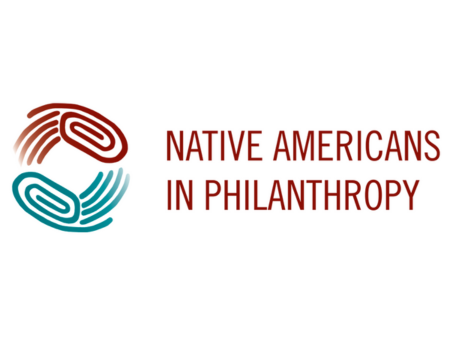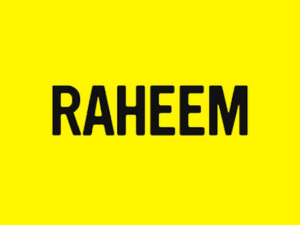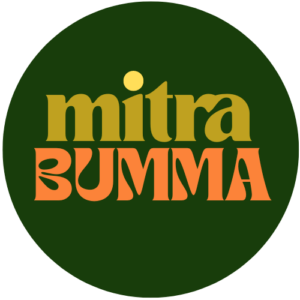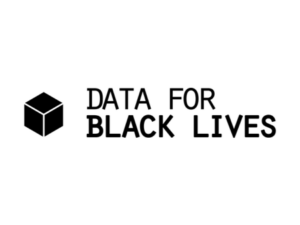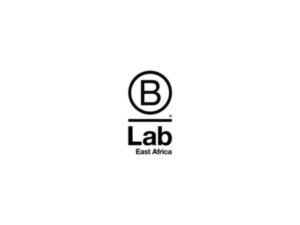Native Americans in Philanthropy is a Native-led organization that promotes equitable and effective philanthropy in Native communities. They support several communities that work together to build knowledge, community, priorities, and power in the sector.
Erik Stegman of Native Americans in Philanthropy spoke with Alec Saelens on December 20, 2023. Click here to read the full conversation with insights highlighted.
Alec Saelens: Could you please introduce yourself and describe the problem that you’re addressing with your organization?
Erik Stegman: I’m the CEO of Native Americans in Philanthropy (NAP). I grew up in Seattle where my family still resides. My mom grew up on the Blackfeet Reservation in Montana and her family’s from the Carry the Kettle First Nation in Canada. I’ve been working on tribal issues since I was a little kid. I wanted to do everything I could to support Indigenous peoples and to protect the sovereignty of tribal nations, which led me to a legal and policy career here in DC, working across the spectrum of things that matter to Native people and tribes.
And over that time I’ve gotten experience in a lot of different sectors and areas, from government and nonprofit to private sector, which led me to this role at Native Americans in Philanthropy, because I’ve got enough experience in a lot of different parts of Indian Country – and enough relationships that I either have a little bit of my own expertise, or I know all the best people who are doing the best work out in Indian country.
NAP has been around for over 30 years. We were founded by a small group of Native and Asian and Pacific Islander (AAPI) professionals who were working in philanthropy. And we had a lot of the same issues for years. Both of our communities have some of the smallest numbers from a data standpoint – we represent hundreds of languages and cultures, and that sort of “othering” in the data has often led to philanthropy severely underinvesting in us and justifying that underinvestment because of our population size, among many other issues. We actually founded our organizations together from that small meeting at the Council on Foundations back in the late eighties. And so we were born as sister organizations to create platforms for Native and AAPI people in the field.
Our mission’s pretty simple. It’s just to dramatically increase philanthropic investments in tribal communities, but to make sure those investments are also in line with our values as Native people. We do that by educating the sector, helping them better understand who Native people are, what tribes are, and what our role is in this country. We have a lot of leadership programs, intergenerational leadership, to support as many of our people in the sector as possible. And then we do a lot of building philanthropic infrastructure to help funders move dollars to the key issues that matter to our communities.
Alec Saelens: Can you tell me a little bit more about the main beneficiaries of your work and how they benefit from the work that you do?
Erik Stegman: Our core constituency is Native people in the United States. This is everything from individual Indigenous people working on causes and issues on their own, urban Native populations, Native people who are working in different metro regions across the country – over 70% of Native people actually live in metro regions – tribes and unrecognized populations, of which there are hundreds of in the U.S., and then Native-led nonprofits. So we work with an extensive network of Native-led nonprofit organizations that are working on the whole gamut of issues, from healthcare to child welfare to economic development. We try to be the biggest circle we can of Native people trying to solve problems in their communities and to invest in solutions and figure out how to get the resources that they need to realize their vision.
Alec Saelens: Wonderful. So what makes your approach distinctive as Native American Philanthropy? What’s distinct from other organizations that might be in that space as well?
Erik Stegman: A couple of things. We sort of walk in two worlds. One is philanthropy and all of the infrastructure and organizations that are trying to help funders move dollars to communities and issues and regions. And then [in the world of] tribal organizations, so other Native-led organizations working on policy and all sorts of other things. I think where we have really innovated is, we want partnerships that can actually move resources and set up new infrastructure for communities, to do things that they couldn’t do before. So we do a lot of private partnerships.
Right now, we are doing a lot of work to try to unlock all the new federal dollars that are being invested through the Inflation Reduction Act and the new infrastructure law. We have things like the Tribal Nations Conservation and Climate Funding Collaborative, which brings tribal leaders together with private sector constituents and federal officials to figure out the best ways that we can invest in tribally-led climate and conservation solutions. We’ve set up pooled funds and pledges from philanthropic funders that are helping tribes access more of these federal dollars. And then we’re doing a lot of learning and education to help move the field forward in an Indigenous way around those issues.
A big part of our work is this cross-sector approach. One sector isn’t going to fix these things, but organizations like ours have the reach and the national network to bring those experts together with community leaders and to try to figure out what we need to do to actually solve these problems. And it’s often a blend of policy and philanthropic investment and other things. We try to be a platform to incubate that new infrastructure to support our community.
Alec Saelens: How do you measure the success of your work? What is the evidence that you look at to assess whether or not you’re making progress?
Erik Stegman: We have a wide range of educational programming and we measure how we’re increasing the number of funders who are coming to those educational resources – we have a monthly member education series that really lifts up conversations about what’s happening in Native communities. We’re able to directly measure the number of funder relationships we’ve developed with the nonprofits and the tribes that are on those, who are then receiving direct funding. So there’s some really simple kinds of measures like that.
We’re also trying to just figure out new ways that we can work with our partners who are intermediary funders like we are… to figure out, how can we better assess whether we’re moving the whole field? Are we all seeing an increase in investments in these issues? Because the broader data doesn’t really actually tell us very much. So a lot of what we’re trying to do is to build better data around that work.
Then on the infrastructure part of what we do – building the infrastructure to the solutions – we have direct data from that. When we partnered on this America the Beautiful Challenge, which is one of the largest funding vehicles from the new federal funding to be invested in conservation and biodiversity work, we partnered with the National Fish and Wildlife Foundation, which is the federally chartered foundation that’s distributing that funding, and set up an MOU where we guaranteed the non-federal match requirement for every successful tribal applicant, which is a huge barrier for tribes. We were able to invest a relatively small amount of philanthropic funding, but about a third of that entire funding round went to tribes and quite a few of those tribes mentioned that that match guarantee was a major reason for that. We were able to really pinpoint the specific leverage that philanthropy has.
So we have a variety of different ways that we look at measurement, but I think there’s a lot more we can do to build stronger measures of how we’re actually shifting the whole field by learning from what we’re doing in these specific places.
Alec Saelens: That’s fascinating. Leaving aside perhaps questions of funding – which are one of the most recurrent barriers for creating systems change – what other challenges do you face in the work that you do?
Erik Stegman: I think there’s just a major capacity challenge. We don’t have enough Native people who are working in policy, in finance, in philanthropy. We pulled together as many as we can to support the work that we’re doing, but there’s a lot of leadership pathways that still [need strengthening]. A lot of the biggest challenges I see for our Native nonprofit partners in the field is that they don’t have some of the expertise that they need. So a lot of our work is trying to support, and to make the case to investors why they need to support, some of these leadership programs and the ability of larger nonprofits to build the capacity of the next and rising generation of leadership in these different skill sets and areas. So that’s a big one for us.
The other one that’s changing a lot, but it’s still a big challenge for us, is that a lot of Native organizations and communities still approach things from a deficit perspective because we have always been underinvested. The federal government has fallen down on its treaty obligations and what they’re supposed to be doing. We’re used to having to apply for federal funding opportunities, and that leads us to constantly having to focus on our problems and our challenges and thinking about how we can invest in a really small way in a big problem. A lot of what we’re trying to do is to really be the voice of the strengths that Native people bring to the table, the grounding in our culture and why that matters, and to help move Native nonprofits and tribal governments and grassroots organizers to think big about what future they see for themselves and how we can work together to move toward those big solutions. Just moving away from that deficit mindset that’s so entrenched in our communities is a big struggle. But it’s shifting a lot.
The last piece, that’s linked to that, is the public narrative issue. We have always struggled, whether you’re working in policy or in philanthropy, with a lack of understanding by the general public about Native people and tribes. And if they do have some understanding, it’s something they picked up in their middle school textbook that was riddled with problematic narratives and histories that didn’t actually match our experience. But a lot of that is shifting now, too. We’re seeing a big change in the awareness of who Native people are. It’s not just this sort of rooted-in-history understanding of people, and they’re starting to see the lives of real Native people in popular culture, in more and more news and press, about who we are. They’re seeing our movements and some of the ways we’re innovating. I can’t believe how many Native people I see on the news these days who are leaders in the fashion industry now. So that’s really starting to shift, and I’ve seen that really open up the eyes of philanthropy because I think we’ve just been ignored for so long and so much of that had to do with the public narrative.
Alec Saelens: The deficit mindset and the public narrative issue seem to be two sides of the same coin – what work are you doing to try and address those? Do you have any levers that you are able to pull, initiatives that you’re able to fund or organize, to move away from those issues?
Erik Stegman: Yeah, I was a youth organizer my whole life and I used to run the Center for Native American Youth in my last job at the Aspen Institute. I really believe in the power of young people to think differently about this work. When I got to our organization, I felt that we needed to have a real leadership program for young people, that was centered around the issues that mattered to them. So we have something called the Native Youth Grantmakers program, which is in its second year. We pull together a small cohort of 18 to 24-year-old Native youth who are doing really impactful things in their community, and they go through a curriculum with us that’s really focused on further developing their leadership skills, but to also understand what philanthropy is and why their voice matters in philanthropy.
We put them in those meetings that we get invited to by funders and other people who are in high impact networks, so they can speak with authority about what kinds of solutions they’re undertaking in their community, and learn what it takes to make the case about why your community and your issues matter for investment. They also take part in our Native Voices Rising Funding Collaborative, which is a participatory grant-making program. Right now we’ve distributed almost $6 million to Native-led, power-building organizations across the country. But youth leaders are part of that, and they’re investing in nonprofits across the country that are doing great work.
The more that you have leaders that have a support system behind them, that are going through a culturally grounded curriculum, that’s just one way that we look at how to really bring that voice, that future-oriented vision to the work that we’re doing. Because none of them want to sit around and talk about all the problems in their communities. They’re always pushing philanthropy to think about where they see the solutions.
Alec Saelens: Just out of curiosity, do you work with media organizations at all that are Indigenous-led or Indigenous-serving?
Erik Stegman: Yeah, there’s the Native American Journalists Association that has some leadership that’s been doing some pretty cool stuff. Some of our youth leaders in my last program were rising journalists themselves. I think we’re hoping to do more of this.
The other thing is that we didn’t want to develop this program to try to feed people into philanthropy. It was just to make sure they understood philanthropy as a power source. But they come to places like DC, go to New York, and we are trying to engage with other networks and programs so that they understand these sorts of efforts. So that’s one of the nice things about this program as it develops, I think there’s a lot of different ways we’d like to connect it. But there are some new efforts I think, that some of the Native journalist groups are starting to undertake on this now too – because there’s a lot of interest in it.
Alec Saelens: How much do you think your work is about systems-level change, and what do you think are the core elements that are needed from actors and partners in this space to be able to affect that system-level change?
Erik Stegman: I would say our primary focus is at the systems level. I think that for too long, especially in places like philanthropy, it hasn’t been at a systems level enough. And we’ve been kind of picking around the edges where we can find little bits of opportunity, but if we’re really going to change the systems that have so negatively impacted our communities, we have to have these cross-sector partnerships front and center. That’s one of the things that I really care deeply about. We are rooted in philanthropy, that will always be sort of the bedrock of who we are, but philanthropy is but one sector that needs to be at the table and part of the solution for any systems-level change. That’s one of the reasons we’re doing so much coordinated work with the government, with tribal leaders. Before this phase we weren’t actually doing as much direct work with the elected tribal leadership and tribes across the country. And they are really critical players in our world too – they bring unique legal and political power to the table. I think we need to be doing more with the corporate sector and the private sector. So I think that’s really the biggest focus we have – it is so easy, whether you’re in a Native organization or any of these sectors, to just get so siloed. And philanthropy is one of them too, where we just talk to ourselves and we create our own language. So many people I know grow up in the social sector and they stay in the social sector lane and they actually struggle with understanding who needs to be at the table.
Some of the work, for instance, we’re doing on trying to change access to capital, which is one of the biggest issues in our communities, is to figure out how to get the philanthropic people together with the banking people, and the Native-led economic development folks and Native business owners to actually figure out what do we need to do together because we need every part of the system to change the system. We really want to be that hub for that cross-sector collaboration and innovation.
Alec Saelens: Can you talk about collaboration and this cross-sector approach: what lessons have you drawn from this work that could help other people understand how to achieve more of it? What would help other people replicate the success and mindset that you have?
Erik Stegman: Assembling a diverse set of experience. That is number one, and I learn something new every day. I would say 80% of our job is translating between sectors.
One perfect example is we’re doing more work in the economic development space. So many people don’t understand what it takes to finance a development project. What does that even mean? What does risk mean? Why don’t banks get involved in something? And then you’ve got to go talk to a funder to help them understand, hey, actually there’s a lot of opportunity with your kind of capital to help a community that’s trying to get a project off the ground to access the private sector funding. But we talk such different languages, and if you don’t have that experience, you’re constantly having to take three steps back and break down how things work. To have the experts who can do that, so that you can get to a shared “table” of understanding and have enough knowledge together about what each other does, to have those light bulbs go off, and say, ah, this is where my sector and experience connects with yours, so that we can get to the solution.
And again, because we’re so siloed, even in our own organizational structures, it feels gutsy in the social sector to actually do that, because people will think, oh, you’re out of your lane or something. I’ve really learned to stop worrying so much about what my lane is, as far as the kind of work I’m doing, because we’re still working toward the same mission and goals and we happen to have a deep experience and understanding of the philanthropic sector, enough that we can go and do that outreach and that translation and that strategic development to get everyone to the table. So that’s the biggest one for me – having that experience to translate between these different sectors and to have enough people with experience outside your sector on your own team, to really help you do that.
Alec Saelens: Do you have an example that speaks of that having worked? You mentioned at the top of the conversation a few things that you’ve done, but I’m curious if you have a case study to share.
Erik Stegman: Sure. Probably where this is playing out the most right now is in the conservation space. When you have a big federal investment come along, the people that have the deepest knowledge about how to help access that money, are people who have experience in federal agencies who’ve actually done that work. Philanthropy sort of scrambled when all this new federal money came along, but enough of them did not have that experience in the federal government to know how to even invest in this work. So we brought on staff who had had that experience working both as Native people in the federal government, but who also were administering grants who could then work with the funders to say, hey, here’s the barriers that we know exist from the inside of government, because tribes are always talking to us about it. And that’s how the match guarantee came about. Super-boring technical thing, but if you talk to any tribe leader in the country, it’s one of the biggest barriers to all kinds of funding. And we don’t even think we should have match requirements, because they owe us a treaty responsibility to invest. But then it was like, well, what do we do? How do we actually make this happen? That’s when I would talk to my funders who, because they’d been in philanthropy, were like, well, this is how you should put together a pooled fund and we think it should look like this, and we’d love to go and make the case to the other funders to chip into this pooled fund if you think this can help get more tribes dollars in these conservation projects.
That’s how the collaborative developed. Today it is this really cross-sector place, where we’ve had some effective technical things that we’ve done to get funding out the door. That won a lot of the respect of the tribes because they’re like, oh, this is great, you actually got something done for us, we want to be involved in this. And then we started a learning community because a lot of these funders were getting more and more engaged with all this awesome work the tribes are doing across the country to restore lands and restore the buffalo herds and all sorts of things. Now we’re starting to see all sorts of new movements around the issues that tribes really care about by funders. But we also have the feds at the table who are like, well, here’s the Indian Youth Service Corps funding that was announced: how can we work together to identify pilot projects out in Indian Country that really care about this? And then funders can actually figure out, okay, here’s what we can do to help get the capacity behind those, so they can then access those resources. So it became kind of a lab environment once we assembled the right people who were really focused on this goal of investing in tribally-led conservation work.
Alec Saelens: I love the fact that Native leaders are still at the heart of shaping those projects, but they have an infrastructure and network to pull on.
Erik Stegman: And one other big key to that success that I really learned is the power of partnerships with the backbone organizations in my field. So that’s a partnership with Biodiversity Funders Group, which is one of the big affinity groups of all the funders that invest in biodiversity and conservation work. And our two organizations, an issue-based organization and one that serves communities in philanthropy, really developed a meaningful partnership that brought those networks together. The people who are used to funding Native people, those who fund conservation work, and that kind of collaboration of both the technical expertise and the relationships helped us form a community that was really inclusive of those networks so that they could start doing that work together. The power of those backbone organizations, I think is really critical because all these folks want to be part of this, but you’ve got to have the right organizations working together that have the capacity to actually pull all this stuff off and to run the learning community, launch a pooled fund, but to do it at the direction of the communities we serve.
Alec Saelens: This goes back to the first challenge that you mentioned, around leadership and management capacity from Native communities, in order to facilitate this work, I imagine.
Erik Stegman: Yeah. We need a lot more operations people. I tell so many young people I see with any kind of operations skill set that you should really think about going into finance management, any other kind of operational skills – because that’s where a lot of us struggle the most. If we add more of those folks, I think we could get a lot more done. We’re doing our best to try to help build it.
Alec Saelens: Is there anything that you would like to share? Anything that would help illustrate how valuable the work is that you’re doing, and how other people could take it forward?
Erik Stegman: Just to really underline, from my own perspective at least, just how much progress our nonprofits and tribes and Native activists have made even in the last decade. I’m seeing so much new leadership rising. Our young people are rebuilding our languages. There’s just so much happening. There’s so much energy –like I said, fashion, all sorts of things, Native futurism, we have an Indigenous Comic-Con that’s huge now. It just feels like we’re in this unique moment where I want to do everything possible to keep moving forward. And I think we’re in a new place of collaboration as Native people. We have a lot of new allies who didn’t really understand us, but are now starting to because of that public narrative shift, which a lot of our people worked hard to take part in. And I think together we’re starting to finally move toward this place where we are realizing new opportunities for ourselves because we have partners that understand who we are and have real relationships with us. So I think it’s just a very exciting moment in urban and rural and other tribal communities to get a lot of stuff done and we’re seeing the results.It’s a lot of what drives me in this work, and I know it drives a lot of the other folks that I work with.
Click here to read the full conversation with insights highlighted.
Alec Saelens is a former journalist who supports SJN and its partners track solutions journalism’s impact on society and the industry. In his former role, he researched and consulted on the connection between solutions journalism and revenue. He is co-founder of The Bristol Cable, the UK’s pioneering local media cooperative. Before SJN, he was a researcher and coach for the Membership Puzzle Project and an analyst for NewsGuard.
* This interview has been edited and condensed.
Learn about other organizations that innovate philanthropy.

